Imagine a leader, and describe what appears in your mind’s eye. Henry V? Richard Branson? Sharon White? Ozwald Boateng? Lord Karan Bilimoria?
History, literature and personal experience help us to form an idea of what leaders – and from that, leadership – look like. If you’re a founder hiring a professional CEO, or looking for a successor, or even trying to develop future leaders within your business, this idea influences your choices, and not always for the better.
For one, many of our favourite examples of leadership are heroic military leaders, which as , is not always apt for running a modern business (or a modern military, for that matter).
Most stereotypes of leadership also tend to be extroverted, middle-aged white men, which can reduce much-needed diversity.
But on a deeper level, they can leave us thinking that there is a singular ideal of leadership, a leader for all situations. This is not how the world works. Time and again we’ve seen CEOs with a strong track record who were parachuted into a new situation, and proved ineffective.
That’s because leadership isn’t something you can measure on a linear scale, assigning people points like you would in a game of Top Trumps. It is contextual. What works will vary by the size of the business, the nature of its activities, its culture, and the other personalities at play.
Breaking down leadership traits
Even individual leadership traits are more complex and context-dependent than they are usually portrayed.
Take communication, a classic leadership competency. In a start-up, a good leader might excel at motivating and energising their team in person, getting them behind the vision, and making them feel valued and heard. The fact they are unclear in written communication and don’t answer emails might not be a problem, but it could be in a large business operating at multiple sites.
Another might excel at breaking down complex problems unambiguously so that everyone can understand them, but just because they’re good at communicating ideas doesn’t mean they’ll be good at communicating reassurance or empathy.
The type of communicator you are will help or hinder you, depending on the situation, and the same variability applies to other leadership traits.
Single-mindedness in pursuit of a vision can become rigidness in the face of changing circumstances. The ability to align others towards a common mission can become intolerance of dissent. Listening to others and consensus seeking can become indecisiveness. The resilience to shrug off failure can become a willingness to accept it.
So is there such a good as good leadership?
None of this takes away from the decisive impact a great leader can have on a business. There is such a thing as good leadership, but it’s not absolute. It depends on the job to be done.
We should therefore be less fixed in what we look for in leaders. Instead, start with what you need as a business, and then use that to guide your search. Think carefully about whether someone’s leadership experience, no matter how impressive, is analogous to the situation they will face at your company.
If it’s not, that doesn’t necessarily mean they will do a bad job, but it does mean you should explore whether they have the capability to adapt.
Indeed, the closest thing you can get to a universal leadership trait is having the toolkit and self-awareness to adapt your style to the circumstances, and if not to surround yourself with senior colleagues who have the strengths and skills you lack.
This can be invaluable in high-growth businesses in particular, where a CEO might find themselves running a very different operation in two or three years – and if all goes well, one much larger – than when they took over.
Leaders who’ve repeatedly proved their effectiveness in very different situations are rather like gold dust, so you’ll likely need to look more creatively and in more depth for evidence of a candidate’s potential, as well as ditching your preconceived notions about what they’ll look like.
But do it well, and you can ensure your company is left not just in the best hands, but also the right hands for the next stage of its journey.
Find out here how we can help find the right leader for your business needs.
















